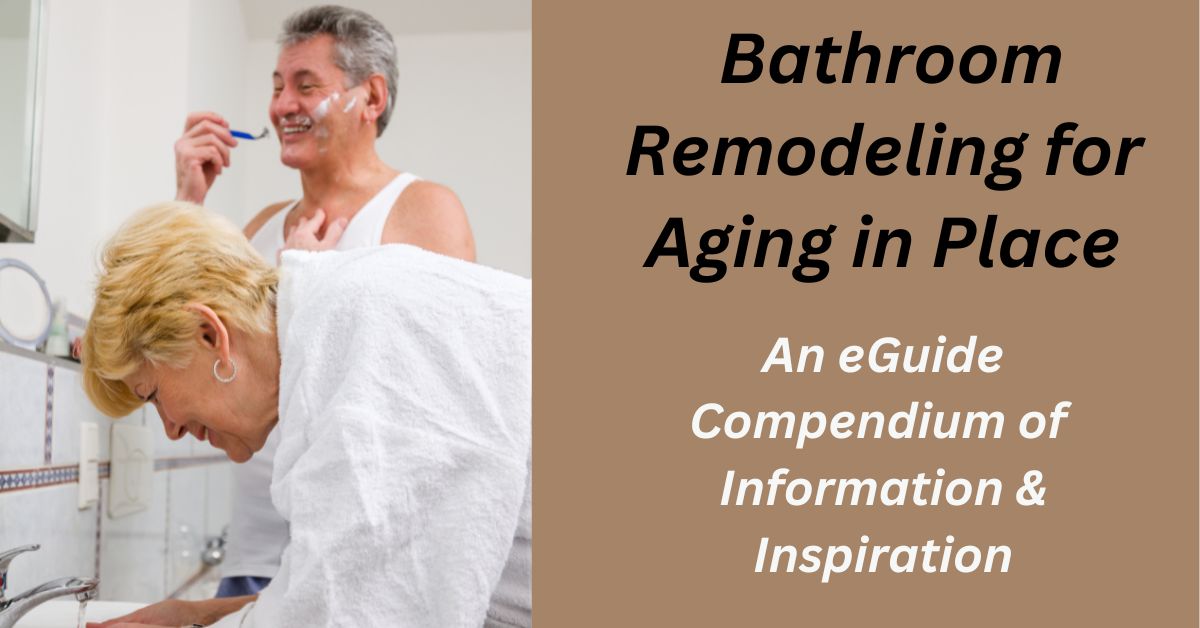Table of Contents
Note: If you came to this post about home defense through a random search, please click on this parent page and our home page for more context.
Home Defense & Security
Home security and defense is quite a large subject. But, for the purposes of this post, we are restricting ourselves to covering aspects of home security and defense that can be included or improved upon in a remodeling project.
The Castle Doctrine
The US inherited common law and a great deal of civilizational attitude from England. And there is a common law doctrine famously formulated by Sir Edward Coke in 1603 in Semayne’s Case:
In his ruling, Coke held: that “the house of everyone is to him as his Castle and Fortress as well for defense against injury and violence, as for his repose.”
Since then the principle has been abbreviated to “a man’s home is his castle.” This means that the Sheriff must get a writ based on probable cause before entering someone’s home.
This is a legal principle but enshrines the instinctively understood idea that the home is where ultimately you protect yourself.
Assessing Your Home’s Security Needs
This all starts with identifying the existing vulnerabilities and weaknesses of your home’s security and defense. You can then pinpoint opportunities for making improvements.
The best way to do this is to start from the home’s neighborhood and exterior perimeter and then work inwards. This is how it looks:
- Are there potential threats to your home’s security from the crime rate in your area or your proximity to potentially hazardous sites?
- What is the condition of the fencing around your yard and garden? How can it be improved?
- What is the condition of your landscaping? Does it offer hiding places for intruders?
- What is the condition of your home’s physical security features? This includes doors, windows, gates, and locks. Are there any other potential access points for an intruder?
- Do you have an existing home security system that includes alarms, surveillance cameras, floodlighting, and a monitoring system and service? If so, does, it need improving? And, if not, how about installing one?
- Evaluate your family’s habits, including work and school schedules. Do you have very young children at home or elderly relatives, who may require specific security measures?
- What about physical self-defense? Do you have or should you get firearms or other tools for self-defense? Where do you keep them?
- Do you have a safe room or a safe storage room? Should you provide for them?
You will find that creating a security environment for your home requires a “layered” approach that involves many different elements.
And then there are aspects of overall security that are separate from safety from intruders. These include fire protection and accident prevention.
- Related post: Home Accident Prevention
Once you have made this assessment, you will be in a position to plan for security-related measures to include in your remodeling plan.
Securing Your Home’s Perimeter
A sturdy fence or wall around your home should be the first physical barrier against intruder encounters. If you don’t have a fence, consider installing one that is designed to resist cutting and climbing. If you do have a fence, consider ways to beef it up:
- Should it be taller?
- Should it be reinforced?
- Should you add barbed wire or other deterrents to the top of it?
- How are the gates and locks?
- Consider adding perimeter sensors.
Securing Your Home’s Perimeter Using its Outdoor Spaces
Landscaping can be a factor in securing your home’s perimeter. Use it strategically. For example:
- You can grow thorny hedges along the wall or fence surrounding your property.
- You can plant prickly bushes below your windows. Rose bushes, holly, and cacti are excellent deterrents. They can be natural barriers that are both functional and beautiful.
- You should trim trees or bushes that might provide cover for intruders.
- You should avoid having trees or bushes that interfere with your lines of sight around your property.
- Have plenty of open space to make it difficult for intruders to approach your property undetected.
- Using rocks and gravel can make it difficult for intruders to approach your home quietly.
- Related post: Yard and Garden
Outdoor Lighting for Home Security
Outdoor lighting is a powerful deterrent for intruders. Properly deployed outdoor lighting makes it difficult for intruders to approach your home at night without detection. Several types of outdoor lighting are effective and you can deploy them all.
Motion-activated Lighting
This comes on automatically when intruders approach. It will startle them, make them feel exposed, and likely cause them to leave. You install this type of lighting around the perimeter, near entryways, and anywhere intruders are likely to approach.
Floodlighting
You can use floodlighting to cover a large area with bright, continuous light. Use it near driveways and around the perimeter of your property. Floodlights are a strong deterrent against intruders.
Landscape Lighting
This has a dual purpose. It illuminates your property at night, which is a deterrent to intruders. And at the same time, it enhances your enjoyment of your landscaping by enhancing its features. However, be considerate of Nature and make this lighting bird-friendly.
LED Outdoor Lighting
If your local climate conditions allow it, use solar-powered LED outdoor lighting. Hardwiring an outdoor lighting system is expensive. Consider these:
Reinforcing Entry Points for Home Defense
Upgrade your doors, windows, and locks to prevent unauthorized entry and deter intruders. Here are some ways of doing this:
Exterior Doors
Replace hollow-core exterior doors with solid-core or metal doors. Make sure it has a solid frame and hinges that can’t be tampered with from the outside. Install peepholes in exterior doors, so you can see who is outside without opening the door.
Windows
Replace single-pane windows with double-pane windows. These are more difficult to break. And adding window film makes it even more difficult. Install window locks to prevent windows from being opened from the outside.
Install window blinds and curtains. Would-be intruders want to be able to scope out your interior to see if it is worth breaking into.
Bonus: double pane windows are energy efficient.
Reinforce Sliding Doors
Install a secondary lock or pin to prevent the sliding door from being lifted out of its track. Also, insert a dowel into the track to prevent the door from being slid open. And, same as with a window, add a film to make it hard to break a glass slider. Install a glass break and vibration detector. This won’t prevent an intrusion but it will alert you.
Upgrading Locks
Install deadbolts on all exterior doors. And make sure the locks are high quality and strike plates that are screwed into the frame with long screws. Consider using smart locks in conjunction with your security system. This allows you to lock and unlock doors remotely.
Door and Window Sensors
Install door and window sensors as part of your home security system in conjunction with security cameras to monitor activity near your entry points.
Installing Security Shutters
Security shutters are an additional way to protect your windows and doors from intruders. They incidentally also provide additional insulation from exterior heat, cold, and exterior noise.
These shutters are typically made of steel, aluminum, or reinforced polymer. They are attached to the window frame or the exterior wall. You can operate them manually or electronically.
While security shutters are an additional layer of protection, they affect your home’s exterior appearance and may not be appropriate for your situation.
It is best to have these things professionally installed and it may be that you will need to run it by your local building authority.
Installing a Home Security System
A home security system is an important component of your layered approach to home security. It requires choosing the right equipment and the right provider.
Choosing a provider: Seek out and compare the various companies that operate in your area. Consider their respective features. These include:
Professionalism: Reputation, range of services, customer service, cost, and installation process (installation may be professional or could allow for some DIY).
Equipment options: These include cameras, sensors, alarms, smart locks, and compatibility with pets.
Monitoring options: These could be professional monitoring or self-monitoring (via a smartphone app or smart assistant). Professional monitoring could be done in-house or third party.
Integrations: Can the security system be integrated with your home automation system?
- Related post: Home Automation
Incorporating Surveillance Cameras
Having surveillance cameras as part of your security system (and making that fact known with notices) is an effective additional layer of security protection and deterrence for intruders.
Choosing a system: Systems can be hard-wired and wireless. Wired systems are more reliable but harder and more expensive to install than wireless systems. Also, when evaluating these systems, consider ease of use.
Choosing cameras: Available cameras include bullet cameras, dome cameras, and PTZ (pan, tilt, zoom) cameras. Bullet cameras are best for the outdoors, dome cameras for indoors, and PTZ cameras for operational flexibility.
Placement of cameras: Placement is critical to the camera’s effectiveness. Cover entry points, windows, any high-value area (such as a safe), and high-traffic areas (such as a hallway or the living room)
Integration: Consider whether a proposed surveillance camera can be integrated into your existing or proposed smart home system.
Recording and storage: Consider how your surveillance system will record and store images capture. Will it be a local hard drive or cloud storage?
Integrating Smart Home Technology
By using automation you can enhance your home security system beyond the capability of its individual parts. You can control the system remotely and receive reports of it remotely. Here is how that can work:
Smart locks: You can lock and unlock your doors remotely. And some locks can be programmed to lock automatically when you leave home, in case you forget.
Smart cameras: Your cameras can allow you to monitor your home remotely on your smartphone. They can notify you when they detect activity. And some cameras can be programmed to recognize faces.
Smart lighting: Your lighting system can be deployed to assist with home security. It can be programmed to go on and off at set times. This can make it seem your home is occupied when in fact it is not. This is a deterrent to intruders.
Voice control: You can exert voice control over your system via smart assistants like Alexa and Google Home.
Choosing Effective Self-Defense Tools
Self-defense tools include firearms, bladed weapons, sticks, and baseball bats. They also include less-than-lethal weapons like stun guns, heavy sticks, baseball bats, personal alarms, pepper sprays, and pepper spray guns.
All of this is an individual choice. And things to consider include:
Legal: Some jurisdictions will have restrictions on these things. So do your research.
Effectiveness and range: Some tools are more effective and have a longer range than others.
Cost: Some of these tools, especially firearms, are expensive.
Training: FIrearms require training for proper proficiency.
And then situational awareness and preparation are the best self-defense tool. Preventing an intruder from accessing your home in the first place is far better than having a physical confrontation.
An interesting security measure is the so-called pepper spray burglar bomb. Check it out.
Safe Storage of Firearms
The safe handling of firearms is beyond the scope of a website on remodeling. And if you elect to keep firearms in the house, we recommend getting training from a qualified firearms instructor.
However, the safe storage of firearms is definitely within the proper scope of this website. Firearms and ammunition should be stored in a secure location and inaccessible to children. And, except for the ammunition in a ready-use firearm, ammunition should be stored separately from firearms.
The best option for firearm storage is a gun safe, preferably a safe that is concealed and/or secured to the home so that it cannot easily be removed. Consider these:
We like the “between the studs” safes because you can conceal them behind a piece of artwork and they cannot be removed without a great deal of work.
Building a Safe Storage Room
A safe storage room is an effective way to protect valuables, important documents, and emergency supplies from theft, fire, and other disasters. It should be built to withstand intrusion, fire, moisture, and events such as tornadoes and earthquakes. Consider these attributes of a safe storage room:
Location: It should be where there is limited access. On the ground floor without windows or in a basement are best.
Walls and doors: These should be sturdy (steel and concrete are ideal) and designed to resist intrusion with deadbolts and high-security locks. Consider a door security bar.
Fire protection: Use fire-rated drywall. Install a sprinkler system or automatic fire suppression.
Steel shelves and cabinets: These can withstand brute force attacks.
Lighting: Install motion-sensing lights.
Access control: Consider a key card or biometric locks. Have a security camera with a motion sensor covering the door.
Building a Safe Room or Panic Room
A safe room or panic room is to provide a safe space for you and your family to retreat in case of an emergency, such as a natural disaster or home invasion. Many of the same considerations apply to a safe storage room. In fact, you might want to consider creating them in tandem. However, there are additional things that come into play:
Windows: You should have windows as a means of escape. But equip them with shatter-resistant glass or metal shutters. Windows will also provide air and ventilation.
Communications: A safe room should be able to communicate with the outside world. Consider installing a landline to supplement your cell phones.
Supplies: The safe room should be stocked with supplies, including food, water, a first aid kit, and medicine. Add a toilet or other sanitation equipment.
Lighting: The safe room should have adequate lighting. Make sure that you have flashlights and spare batteries in your supplies.
Adopt a Dog for Home Defense
A dog or two is a great home security measure and a nice addition to your family too. Consider adopting a mini-pack. A small yappy dog and a deep-throated big dog make a perfect intruder deterrent team and they keep each other company. Intruders steer clear of dogs.






















Leave a Reply